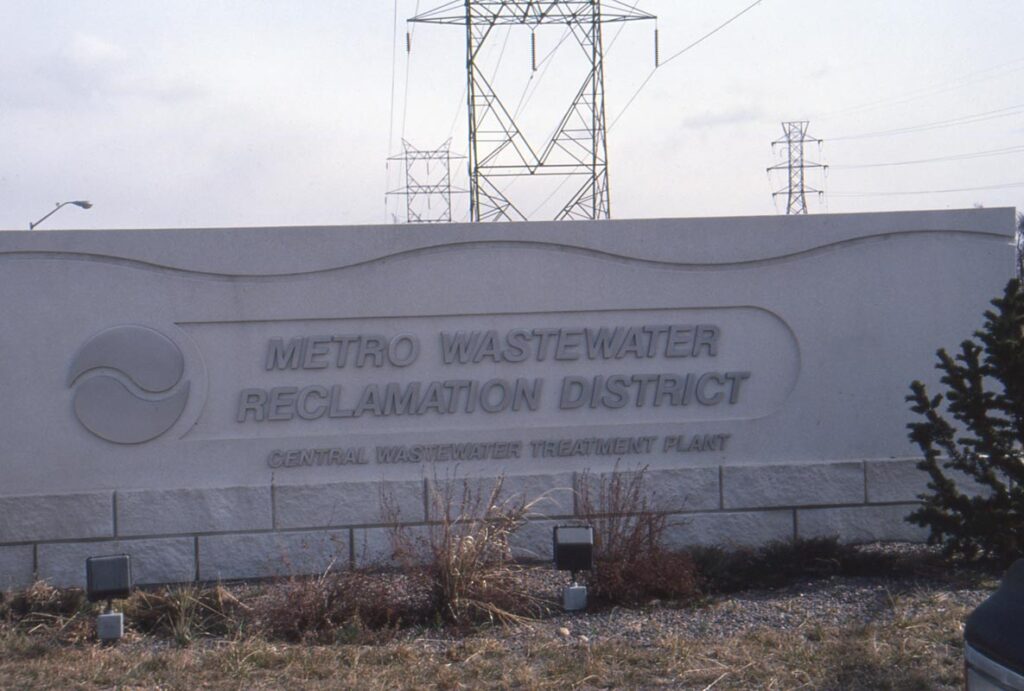Our Vision
We strive to be a responsible leader, an innovative clean water partner, and a great place to work.

Our Mission
We protect the region’s health and environment by cleaning water and recovering resources.

Our Story
Construction of our first facility, the Robert W. Hite Treatment Facility and 50 miles of interceptor sewer lines, began in 1964. The plant began operating in 1966. Scroll through the timeline below to learn more. For a comprehensive history of Metro Water Recovery until 2009, read A 45-Year History by Steve Frank here.
1961

Civic leaders of 13 metropolitan Denver cities signed an historic agreement on May 15, 1961, that created the Metropolitan Denver Sewage Disposal District No. 1.
1966

Central Plant was completed and began accepting test flows from Denver’s North Side Plant late in the year.
1972

The District began conducting research on land application of biosolids. It also established agriculture test plots near Watkins.
1972

Congress passed the far-reaching Clean Water Act, and it was signed into law by then-President Richard Nixon in October.
1973

Metro beneficially recycled biosolids in 1973 by trucking vacuum-filtered sludge cake (about 16% solids) to the old Lowry Bombing Range, spreading the solid material onto the surface to dry and then disking the dried sludge cake into the soil with farm implements. The applied areas were seeded with wheat after adequate dormant time to minimize seed inhibition.
1976

In December, the South Plant went online when flows were directed there for the first time, roughly doubling Metro’s treatment capacity.
1977

Eight new 244,000-cubic-foot anaerobic digesters were completed in 1977 to digest Metro’s sludge.
1984

Metro expanded its role as a regional wastewater treatment agency in 1984 with the completion of much of its $126 million sewer improvements program and the takeover of Denver’s common wastewater facilities.
1984

The Metro District system grew dramatically with the addition of more than 171 miles of interceptors and the Denver Northside Plant primary facilities. Its services were extended to more than 23 local governments, which previously had been served through Denver. These local governments are now referred to as Special Connectors.
1984

With the acquisition of the Denver common system, the District planned to build new primary treatment facilities at its Central Plant to replace the older Denver Northside primary facilities.
1985

The $7.8 million cogeneration facility went online in April.
1986

The industrial waste control (pretreatment) program began.
1987

The Denver Northside Treatment Plant was shut down.
1987

The District reduced costs by switching to applying sludge cake on agricultural land.
1990

The board changed the name of the organization from Metropolitan Denver Sewage Disposal District No. 1 to Metro Wastewater Reclamation District.
1991

The District completed improvements to the Nitrification/Denitrification System and optimized its performance. This $47.2 million system involved extensive modifications to the District’s treatment facilities.
1994

The District adopted e-mail.
1995

The District purchased approximately 36,000 acres of property near Deer Trail, Colorado, adding to the 1993 purchase of 9,900 acres.
1998

Staff implemented the Fixed Asset Replacement Program.
2000

Metro initiated its Comprehensive Planning Program.
2000

For the first time in its 35-year history, Metro’s employees achieved a million man-hours worked without a lost-time accident.
2002

Metro adopted the Service Area Utility Plan to manage the Transmission System. Flows decreased and farming operations took a hit during a historic drought that hit Colorado and the West.
2004

Metro began a major update to South Platte River Water Quality Model to assess impact of in-plant treatment and in-stream improvements.
2006

Metro began using a new, computerized Laboratory Information Management System, called LabWorks. Metro also incorporated geographic information system (GIS) technologies into its systems.
2009

Metro phases out the production of Class A compost and associated buildings are removed. Board of Directors downsized from 67 to 34 members via reapportionment with revision to an establishing statute.
2010

Metro’s Board of Directors approved the Northern Treatment Plant Wastewater Utility Plan.
2016

The Northern Treatment Plant begins operation in Brighton, Colorado.
2016

The Board of Directors adopt the Metro District’s Strategic Plan
2018

Planning begins for the Second Creek Interceptor, a major pipeline that will travel through portions of Adams County, Aurora, Brighton, Commerce City, Denver, and Denver International Airport to be served by the District’s Northern Treatment Plant.
2020

The largest MagPrex phosphorus recovery reactor in the world begins operation at the RWHTF.
